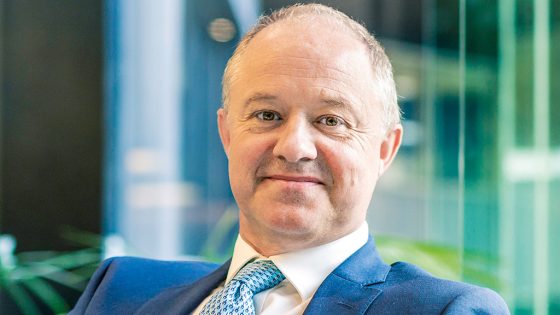Network Rail chief executive Sir Andrew Haines has said he expects the second year of the body’s £45bn five-year funding cycle will go “more smoothly”.
It comes after industry figures expressed dissatisfaction at the speed in which rail work was flowing through to suppliers.
Earlier this year, a number of firms blamed project delays in Network Rail’s Control Period 7 (CP7) for lower-than-expected profit levels.
CP7 started on 1 April last year and runs until the end of March 2029. Network Rail has promised to spend more than £45bn in the period, to boost safety, reliability and other metrics.
“Year two will definitely be smoother,” Haines told Construction News.
He said the “slow start” was due to the group experiencing “significant” inflation of up to 40 per cent on components such as steel and rising quotes from suppliers.
Haines said Network Rail spent up to £900m more in the first few months of CP7 than it did for CP6, but that the higher costs meant fewer main contracts were awarded.
He also said that Network Rail had overspent during the final year of CP6, meaning that money had been drawn forward from the initial period of CP7.
He said: “If you average the two years’ spending then they look completely unremarkable.” But he admitted fewer main contracts had been awarded in the first year of CP7
“The supply chain had the money,” he said.
In January, engineering services giant Renew blamed rail project delays for lower-than-expected profit levels, while tools and equipment firm Speedy Hire said in a trading statement in February that a “delay in CP7 rail works” had impacted its business.
Regulator the Office of Road and Rail warned of “mounting pressures on CP7 funding” in its annual financial efficiency report, published last October.
Earlier this year, Russell Simpson, director at West Midlands-based signalling specialist DigiSig Rail, decried delays in “much-needed CP7 spending”.
“Patch and mend is not happening as it should, and funding is not forthcoming, creating additional pressures on maintenance teams,” he added. “Redundancies are happening across the industry and valuable skills are being lost.”
Simpson warned that when “CP7 finally comes to life” there may be “nobody left in the industry to do the work”. He added that in a “significantly worse scenario” there could be “a major infrastructure-related disaster on the horizon”.
“Without urgent intervention, the risks to both safety and the long-term viability of our railway network will only grow,” he said.
Last month Haines announced he will step down as chief executive of Network Rail this October. He has been at the helm of the UK’s rail infrastructure owner since August 2018.
During his tenure, he has overseen the replacement of London King’s Cross Station’s 40-year-old track, the rebuilding of Glasgow Queen Street Station and the reopening of the Dartmoor Line after a 50-year closure.

